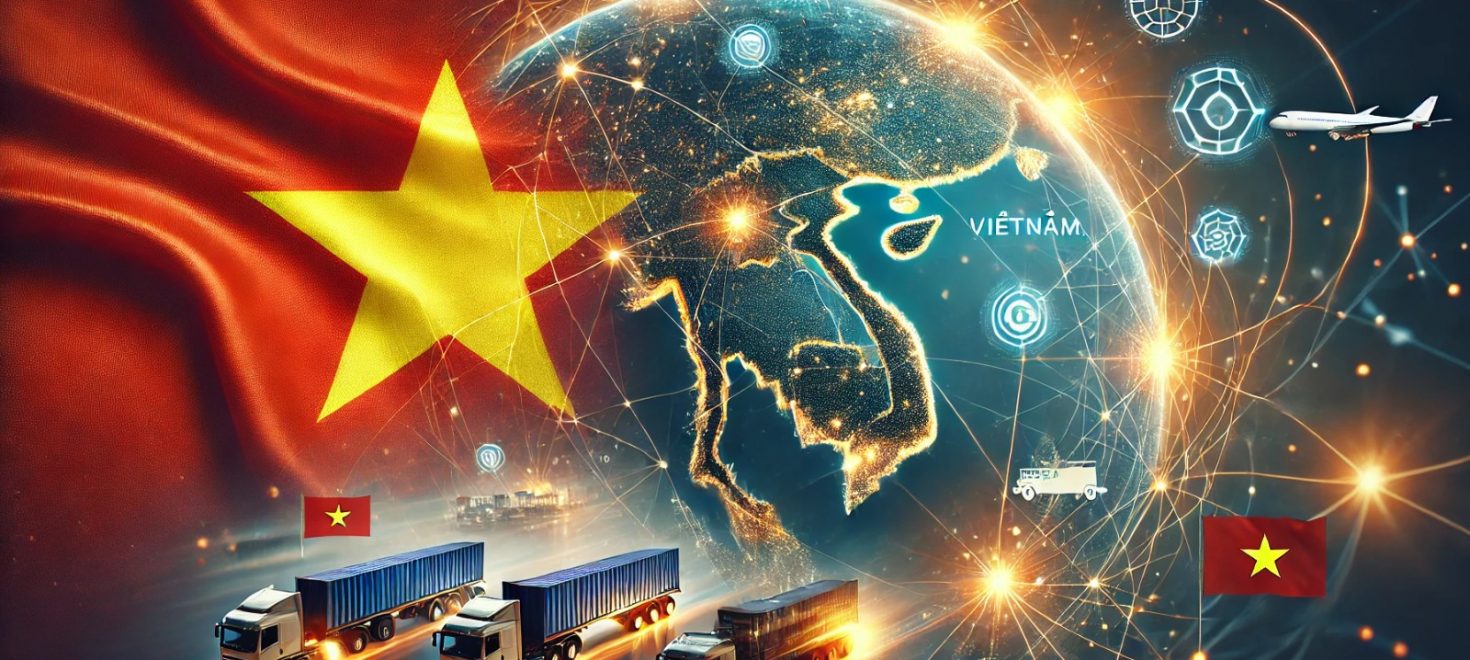Introduction: Vietnam’s Competitive Edge in Building Resilient Supply Chains
Vietnam has emerged as a major player in global trade, thanks to its strategic location, skilled workforce, and competitive manufacturing costs. However, the disruptions caused by global crises, shifting trade policies, and logistical challenges highlight the need for resilient supply chains. A robust supply chain framework is essential for Vietnam to maintain its competitive edge and sustain economic growth.
The Growing Importance of Resilient Supply Chains in the Global Economy
With increasing global uncertainties, resilient supply chains have become a necessity. Factors such as trade conflicts, pandemic-induced disruptions, and climate-related challenges have emphasized the importance of risk mitigation strategies.
Vietnam’s Strategic Position in Global Trade
Vietnam’s geographic location in Southeast Asia makes it a key hub for global trade, connecting major markets in Asia, Europe, and North America. The country has successfully positioned itself as a major exporter of textiles, electronics, and agricultural products. Its extensive network of free trade agreements (FTAs) further enhances its attractiveness as a manufacturing and supply chain hub.
Key Drivers for Enhancing Supply Chain Competitiveness in Vietnam
Vietnam’s supply chain competitiveness is driven by factors such as:
- Investments in infrastructure and logistics
- Integration of advanced technologies
- Adoption of sustainable and green supply chain practices
- Government policies promoting foreign direct investment (FDI)
- Strengthening workforce skills and capabilities
Understanding the Supply Chain Landscape in Vietnam
Vietnam has made significant strides in improving its supply chain infrastructure. Ports, highways, and logistics hubs are being expanded to accommodate growing trade volumes. However, infrastructure development must keep pace with demand to ensure smooth supply chain operations.
Key Challenges Facing Vietnamese Supply Chains Today
Despite growth, challenges persist, including:
- Dependence on a few key markets for exports
- Infrastructure bottlenecks causing delays and inefficiencies
- Limited adoption of advanced supply chain technologies
- High logistics costs compared to neighboring countries
Opportunities for Vietnam to Strengthen Its Supply Chain Resilience
To overcome these challenges, Vietnam must:
- Diversify export markets and sourcing strategies
- Invest in smart logistics solutions
- Enhance supply chain transparency through digitalization
- Foster stronger public-private sector collaboration
Mitigating Disruptions: Building a Robust Supply Chain Framework
Vietnamese businesses must conduct regular risk assessments to identify weaknesses and implement mitigation strategies. Reducing reliance on a single supplier or region can minimize disruptions. Businesses should develop multiple sourcing strategies to enhance resilience.

Mr. Vu Duc Giang
Chairman (VITAS)
“Orders are picking up again, contributing to the gradual recovery of businesses.”
Agility and Flexibility: Essential for Managing Unforeseen Challenges
Agility allows companies to respond quickly to market changes. Flexible production models and adaptable logistics solutions enhance supply chain responsiveness. Strategic inventory management ensures that companies can maintain operations during supply chain disruptions. Buffer stock policies help balance demand fluctuations.
Adopting Technology for a Future-Ready Supply Chain
Automation and AI enhance efficiency, reduce errors, and improve forecasting accuracy. Companies are adopting smart warehouses and automated logistics for better performance. Blockchain provides a tamper-proof system for tracking goods, ensuring transparency and reducing fraud in supply chains. By analyzing data, businesses can predict supply chain risks and adjust operations proactively. IoT-enabled devices help track shipments, monitor warehouse conditions, and optimize logistics in real-time.
Sustainability as a Core Principle for Resilient Supply Chains
Sustainability initiatives such as green sourcing and eco-friendly packaging reduce environmental impact. Companies are adopting renewable energy, low-carbon logistics, and waste reduction strategies. A circular economy approach minimizes waste and maximizes resource efficiency through recycling and reuse. Governments and international organizations are pushing for greener supply chains through stringent regulations.
Risk Management Strategies for Disruption-Proof Supply Chains
Embedding risk management into business operations ensures long-term resilience. Companies that developed strong recovery plans during past crises provide valuable insights into managing future disruptions. A clear communication framework ensures swift decision-making during disruptions. Insurance coverage and contingency plans protect businesses from financial losses due to supply chain disruptions.
The Role of Logistics and Infrastructure in Vietnam’s Supply Chain Resilience
Efficient transportation systems and modern ports enable seamless trade flows. Improving connectivity strengthens Vietnam’s integration into global supply chains. Strategic investments in infrastructure will reduce bottlenecks and enhance supply chain efficiency. Public-private partnerships can drive infrastructure improvements and optimize supply chain performance.
Building Collaborative Relationships Across the Supply Chain
Long-term relationships foster trust, stability, and mutual growth. Open communication between stakeholders ensures smooth coordination and efficiency. Partnering with logistics companies can enhance delivery speeds and cost efficiency. Data sharing enables better forecasting, demand planning, and decision-making.
Case Studies: Successful Examples of Resilient Supply Chains in Vietnam
A major Vietnamese electronics manufacturer diversified suppliers to avoid raw material shortages. E-commerce platforms optimized logistics through technology adoption and last-mile delivery solutions. Vietnamese firms leveraging AI and blockchain improved efficiency and transparency.
Key Takeaways from Real-World Examples of Resilience
- Proactive risk management enhances supply chain strength.
- Digital transformation drives efficiency.
- Diversification minimizes disruptions.
The Future of Supply Chain Management in Vietnam
Automation, AI, and sustainability will define future supply chains. By investing in technology and infrastructure, Vietnam can secure its position as a top manufacturing hub. Digitalization will enhance transparency, speed, and cost efficiency. A focus on resilience, sustainability, and technology will ensure long-term success.
Conclusion: Strengthening Vietnam’s Global Competitiveness Through Resilient Supply Chains
Vietnam’s supply chain resilience will define its economic future. By embracing technology, sustainability, and collaboration, businesses can build stronger, more competitive supply chains. Groyyo’s tech-enabled solutions further support Vietnam’s efforts by optimizing operations and ensuring long-term sustainability, reinforcing Vietnam’s role as a global leader in manufacturing and supply chain management.

Divya Mohan
General Manager (International Business)
divyamohan@groyyo.com


Leave a Comment